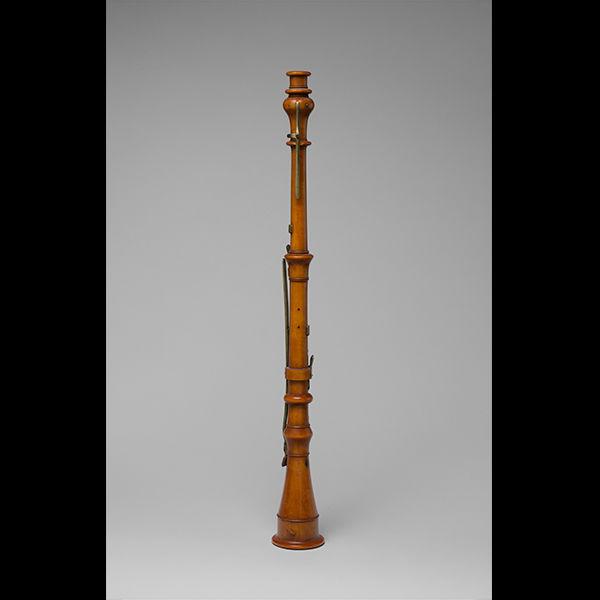Tablā
The tablā, a cylindrical handdrum and bāyā, a kettle drum are performed together as a set of drums used to accompany the classical music and dance traditions of North India. Modern tablā sets usually feature smaller right-hand drums (tablā) made of wood and much larger left-hand drums (bāyā) made of clay or metal. During the nineteenth century the two drums were much closer in size than they are today. The development of the tablā in 18th and early 19th century corresponds with the development of the modern sitār and sarod and the gaining popularity of new genres of music and dance.
Artwork Details
- Title: Tablā
- Date: late 19th century
- Geography: India
- Culture: Indian (north)
- Medium: Wood, skin
- Dimensions: H. 25.4 cm (10 in.), Diam. 19.1 cm (7-1/2 in.)
- Classification: Membranophone-double-headed / cylindrical drum
- Credit Line: The Crosby Brown Collection of Musical Instruments, 1889
- Object Number: 89.4.166
- Curatorial Department: Musical Instruments
Audio

9381. Oboe
0:00
0:00
We're sorry, the transcript for this audio track is not available at this time. Please email info@metmuseum.org to request a transcript for this track.
More Artwork
Research Resources
The Met provides unparalleled resources for research and welcomes an international community of students and scholars. The Met's Open Access API is where creators and researchers can connect to the The Met collection. Open Access data and public domain images are available for unrestricted commercial and noncommercial use without permission or fee.
To request images under copyright and other restrictions, please use this Image Request form.
Feedback
We continue to research and examine historical and cultural context for objects in The Met collection. If you have comments or questions about this object record, please contact us using the form below. The Museum looks forward to receiving your comments.